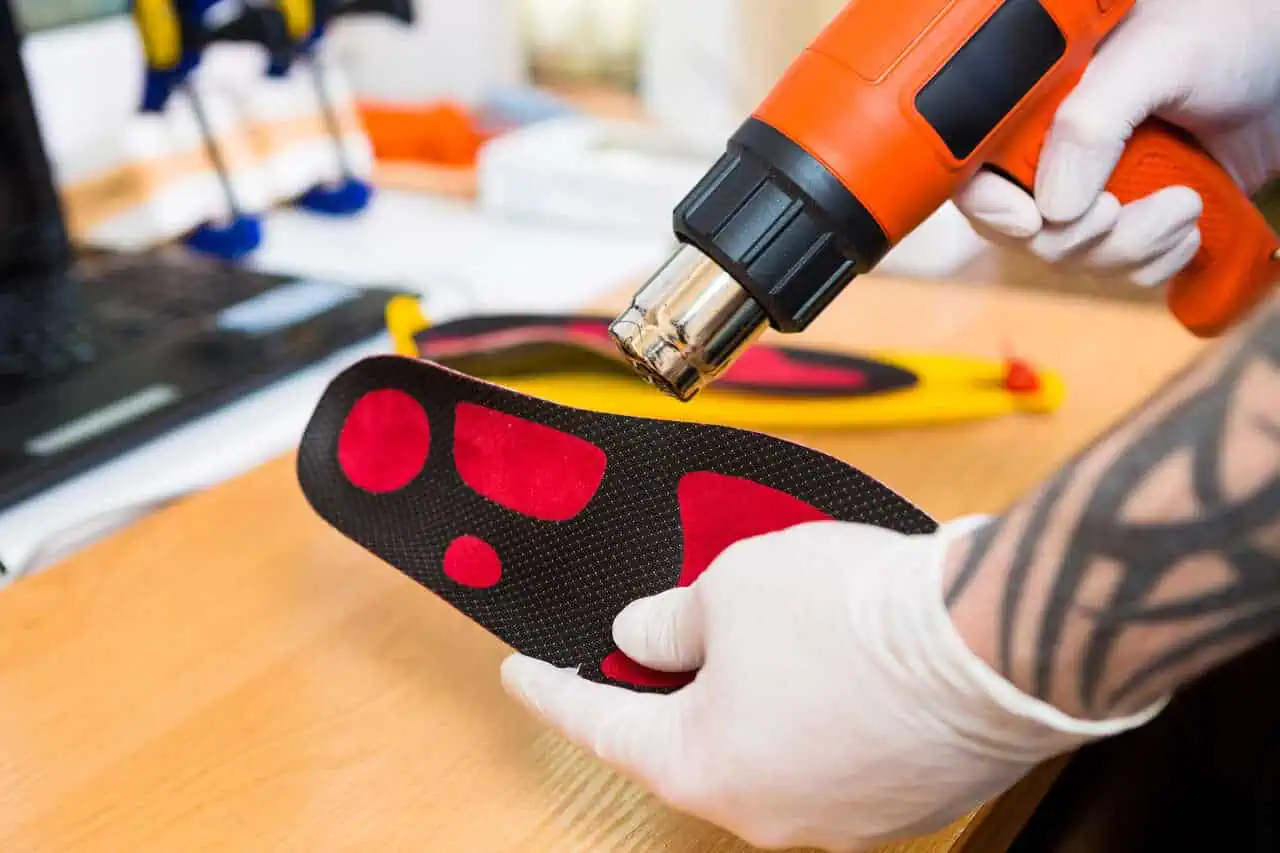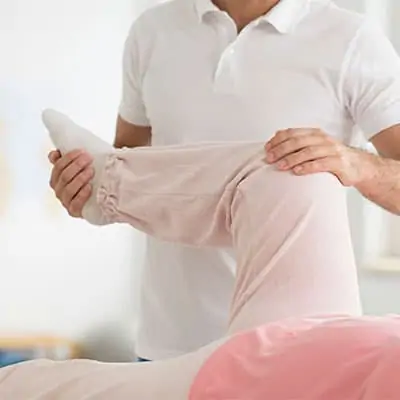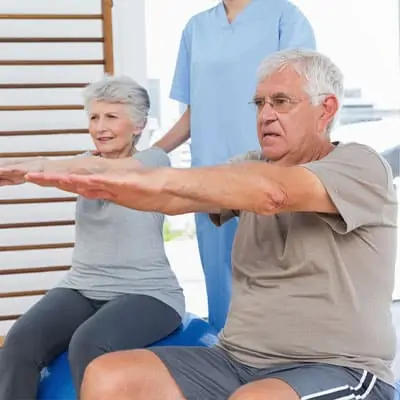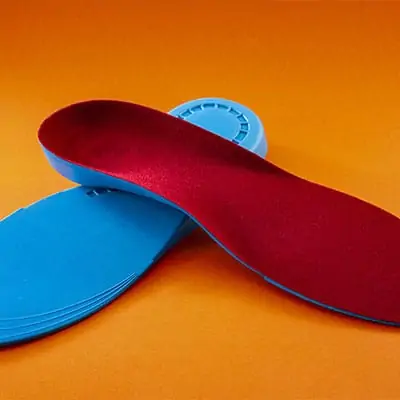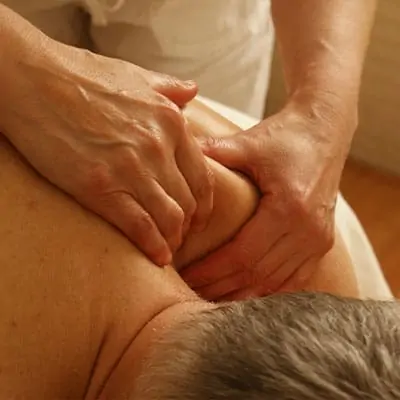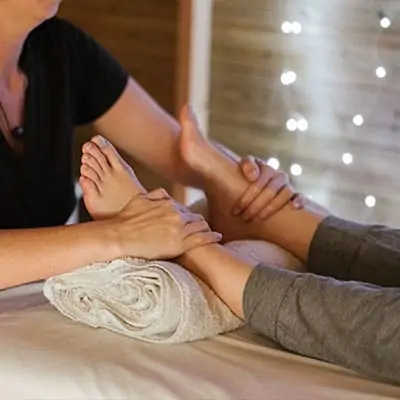Assessing Your Foot Health
A proactive approach to our foot health is essential as it significantly influences our overall well-being. By understanding orthotics, recognizing the importance of proper foot support, and identifying signs of foot alignment issues, we can make informed decisions about our foot care.
Understanding Orthotics
Orthotics are custom-designed devices that provide support and alignment for our feet. These inserts are crafted to address unique foot issues, helping to redistribute pressure and enhance comfort during movement. We need to be aware that orthotics are different from generic insoles available at retail shops. For more clarity on this distinction, we can explore the comparison between custom orthotics vs insoles.
| Orthotic Type | Primary Function | Ideal For |
|---|---|---|
| Rigid | Supports the arch and limits motion | Flat feet, high arches |
| Soft | Cushions and absorbs shock | Sensitive feet, diabetic patients |
| Semi-rigid | Balances support and cushioning | Athletes, active individuals |
Importance of Proper Foot Support
Proper foot support plays a vital role in maintaining our overall foot health. When our feet are well-supported, we experience reduced discomfort, improved posture, and a lower risk of injuries. Research indicates that inadequate support can lead to various issues, including joint pain and muscle fatigue.
| Support Quality | Potential Issues |
|---|---|
| Excellent | Improved posture, reduced fatigue |
| Moderate | Occasional discomfort, fatigue |
| Poor | Chronic pain, misalignment |
Signs of Foot Alignment Issues
Recognizing the signs of foot alignment problems can help us identify when we might require custom orthotics. Common indicators include:
- Persistent pain in our feet, knees, hips, or lower back
- Noticeable wear patterns on our shoes
- Difficulty finding comfortable footwear
- Unusual fatigue after standing or walking for extended periods
Being aware of these signs allows us to seek professional assessments and consider options such as custom orthotics for plantar fasciitis or custom orthotics for knee pain. Addressing foot alignment issues early on is crucial for maintaining our mobility and overall health.
Signs You Might Need Custom Orthotics
Identifying the right time to seek custom orthotics is crucial for maintaining our foot health. There are several indicators that suggest we might benefit from personalized support for our feet. In this section, we will discuss three key signs indicating the need for custom orthotics.
Persistent Foot Pain
One of the most telling signs we may need custom orthotics is experiencing persistent foot pain. This discomfort can manifest in various forms, such as sharp pain, aching, or throbbing sensations. If our foot pain lasts for more than a few days and does not improve with rest or over-the-counter pain relief, it is essential to consider seeing a professional. Persistent pain often indicates an underlying issue, such as improper foot alignment that custom orthotics can help address.
Irregular Shoe Wear
Another sign that we may require custom orthotics is the irregular wear of our shoes. If we notice that the soles of our shoes wear down unevenly, it may suggest that we have an issue with our foot mechanics. This irregular wear can be attributed to conditions like pronation or supination, where our feet roll inward or outward excessively while walking. Tracking the wear patterns on our shoes can provide valuable insight into our foot health.
| Shoe Wear Pattern | Possible Condition |
|---|---|
| Excessive wear on the inner edge | Pronation |
| Excessive wear on the outer edge | Supination |
| Uneven wear on the heel | Misalignment |
Frequent Leg or Hip Discomfort
Lastly, frequent discomfort in our legs or hips may signal the need for custom orthotics. This discomfort can result from improper foot support leading to misalignment or excess strain on our lower extremities. When the feet are not adequately supported, it can cause reverberations up to the legs and hips, leading to pain or discomfort that limits our daily activities. If we experience consistent leg or hip discomfort, seeking custom orthotics could provide the relief we need and help improve our overall mobility.
Recognizing these signs is essential in addressing our foot health effectively. For more information on the benefits of custom orthotics, we encourage further exploration. By being aware of our body’s signals, we can take proactive steps to enhance our comfort and well-being.
Examining Your Gait
When we evaluate our walking patterns, we can uncover significant insights about our foot health and whether we may need custom orthotics. Understanding specific characteristics of our gait can help us identify issues that contribute to discomfort and misalignment.
Abnormal Walking Patterns
Abnormal walking, or gait abnormalities, can manifest in various ways. These patterns often indicate underlying issues such as improper foot support or muscle imbalance. Common abnormal walking patterns include:
- Shuffling: Dragging feet instead of lifting them while walking.
- Wide stance: Walking with feet far apart to maintain balance which may suggest underlying instability.
- Toe walking: Walking primarily on the toes can indicate tightness in the calf muscles or conditions like cerebral palsy.
Recognizing these patterns serves as one of the key signs you need custom orthotics. Observing ourselves or getting feedback from others can provide valuable clues.
| Abnormal Walking Pattern | Possible Causes |
|---|---|
| Shuffling | Lack of strength, neurological issues |
| Wide stance | Balance issues, past injuries |
| Toe walking | Tight calves, neurological conditions |
Uneven Weight Distribution
Next, we should pay attention to how we distribute weight while walking. Ideally, our weight should be evenly distributed between the heel, arch, and toe area. Uneven weight distribution can lead to:
- Excessive wear patterns on shoes: If we notice one side of our shoes wears out faster than the other, it may indicate uneven weight distribution, which can lead to foot pain.
- Pressure points: Specific areas on our feet may feel more sore or fatigued, suggesting that weight isn’t being evenly shared.
Regularly examining our footwear can help us track these issues. Consult our article on custom orthotics vs insoles for further insights.
| Weight Distribution Type | Indicators |
|---|---|
| Even | Normal wear, less fatigue |
| Uneven | Uneven shoe wear, localized pain |
Impact on Posture
Lastly, gait abnormalities can significantly affect our posture. As we walk, improper alignment may lead to compensatory patterns that can raise our risk for further conditions, such as:
- Lower back pain: Poor posture linked to our walking pattern can create tension in the lower back.
- Knee and hip issues: Misalignment may place added stress on our knees and hips, resulting in discomfort.
By observing how our gait affects our overall posture, we can identify the need for custom orthotics that promote better alignment. For more information on how these devices support our bodies, explore our article on how custom orthotics work.
Understanding these components of our gait allows us to take proactive steps toward improving our foot health.
Seeking Professional Assessment
When we suspect that we may need custom orthotics, the first step is to seek a professional assessment. This usually involves a thorough evaluation by a podiatrist. Their expertise is crucial for identifying our specific needs and creating an appropriate treatment plan.
Podiatrist Evaluation
During our evaluation, the podiatrist will conduct a comprehensive assessment of our foot health. This includes examining our feet, observing our gait, and checking for any signs of alignment issues. We may be asked questions about our symptoms, such as persistent pain, discomfort, or how our shoes are wearing down.
| Evaluation Component | Description |
|---|---|
| Visual Inspection | Observing foot structure and any visible abnormalities. |
| Gait Analysis | Assessing walking patterns for abnormalities. |
| Symptom Review | Discussing history and severity of foot, leg, or hip pain. |
Custom Orthotic Fitting Process
Once our evaluation is complete, the podiatrist will recommend a fitting process for custom orthotics. This typically includes creating a mold or using a digital scanner of our feet to ensure an accurate fit. The fitting process is tailored to our unique anatomical features and any specific conditions we may have.
- Initial Consultation: Discuss symptoms and specific needs.
- Foot Assessment: Detailed analysis of foot shape and functionality.
- Molding/Scanning: Customized molds or digital scans to create orthotics.
- Fitting Appointment: Adjustment and fitting of the custom orthotics to ensure comfort.
Benefits of Customized Support
Custom orthotics are designed to provide personalized support that can lead to significant improvements in foot health. They help in alleviating pain, improving foot alignment, and enhancing overall comfort during daily activities. The tailored support can greatly impact our quality of life, especially if we experience conditions such as plantar fasciitis, flat feet, or other issues.
| Benefits | Description |
|---|---|
| Pain Relief | Helps in reducing discomfort in feet, legs, and back. |
| Improved Alignment | Encourages proper foot alignment and reduces strain. |
| Enhanced Stability | Provides better support during walking or running. |
| Custom Fit | Designed specifically for our foot shape and needs. |
For more insights on the advantages of this personalized support system, explore our article on benefits of custom orthotics. Recognizing the signs we need custom orthotics is the first step towards healthier feet, enabling us to live more comfortably and actively.
Maintaining Foot Health
Ensuring that we take proper care of our feet is vital to our overall well-being, particularly if we have invested in custom orthotics. In this section, we will discuss how to integrate orthotics into our daily lives, monitor our progress and comfort, and understand the importance of regular check-ups.
Integrating Orthotics into Your Daily Routine
To maximize the benefits of our custom orthotics, it is crucial to incorporate them into our daily activities. Here are a few tips on how we can effectively do this:
| Daily Activity | Tips for Integration |
|---|---|
| Walking | Always wear orthotics in our everyday shoes. |
| Exercise | Use orthotics in athletic shoes to improve support. |
| At Work | Ensure our work shoes accommodate orthotics. |
| Home Activities | Utilize orthotics in our slippers or casual footwear. |
By being consistent in wearing our orthotics throughout the day, we can enhance our foot stability and overall comfort.
Monitoring Progress and Comfort
As we start using custom orthotics, monitoring our experience is essential. We should be aware of any discomfort or changes in our symptoms. Keeping a journal can help us track our progress and note any improvements or issues we may encounter. Important factors to consider include:
| Aspect | What to Monitor |
|---|---|
| Pain Levels | Rate from 1-10, noting any reductions. |
| Shoe Wear Patterns | Observe how our shoes wear over time. |
| Changes in Foot Alignment | Note differences in how our feet feel. |
This information will be helpful for our next appointment, especially if we notice any signs that indicate we may need adjustments in our orthotics.
Importance of Regular Check-ups
Regular evaluations with a healthcare professional are vital in maintaining foot health. These check-ups help ensure our custom orthotics are still meeting our needs as our conditions change. We should aim to schedule follow-ups at least once a year or more frequently if we notice changes in our foot health.
During these appointments, professionals can reassess our requirements and make necessary adjustments to our orthotics, enhancing their effectiveness. For example, those with specific needs like custom orthotics for flat feet or custom orthotics for high arches will benefit significantly from this ongoing care.
By actively integrating our orthotics into daily life, closely monitoring our comfort, and attending regular check-ups, we can ensure better foot health and support our overall well-being.


